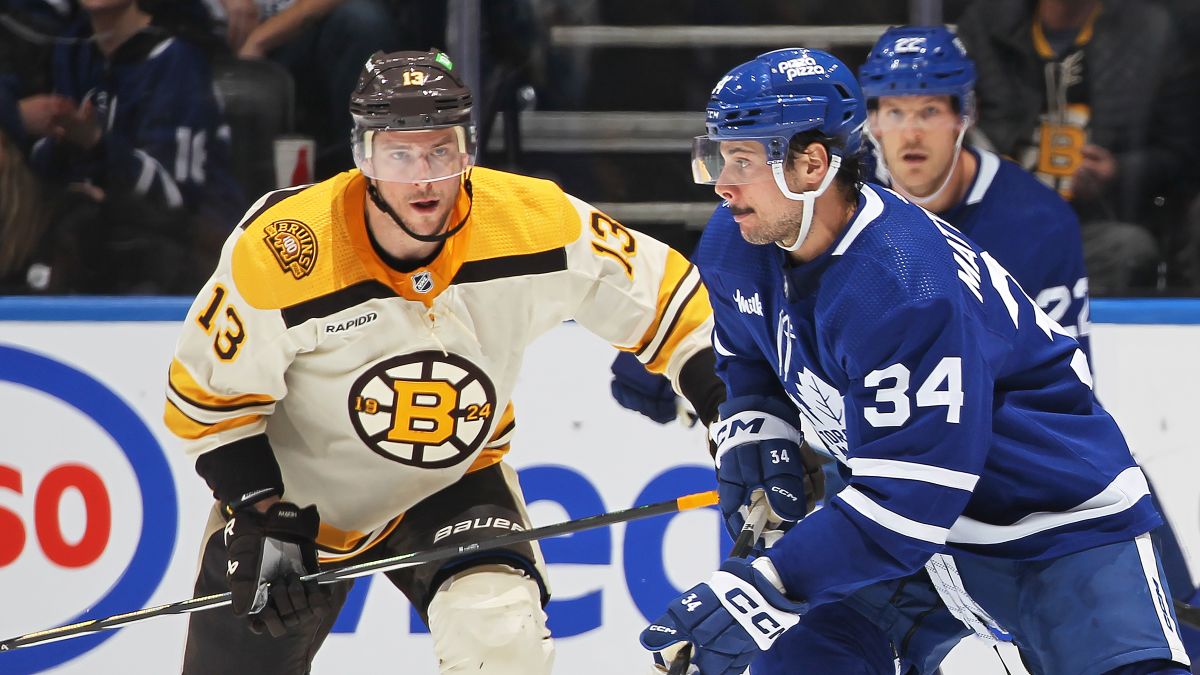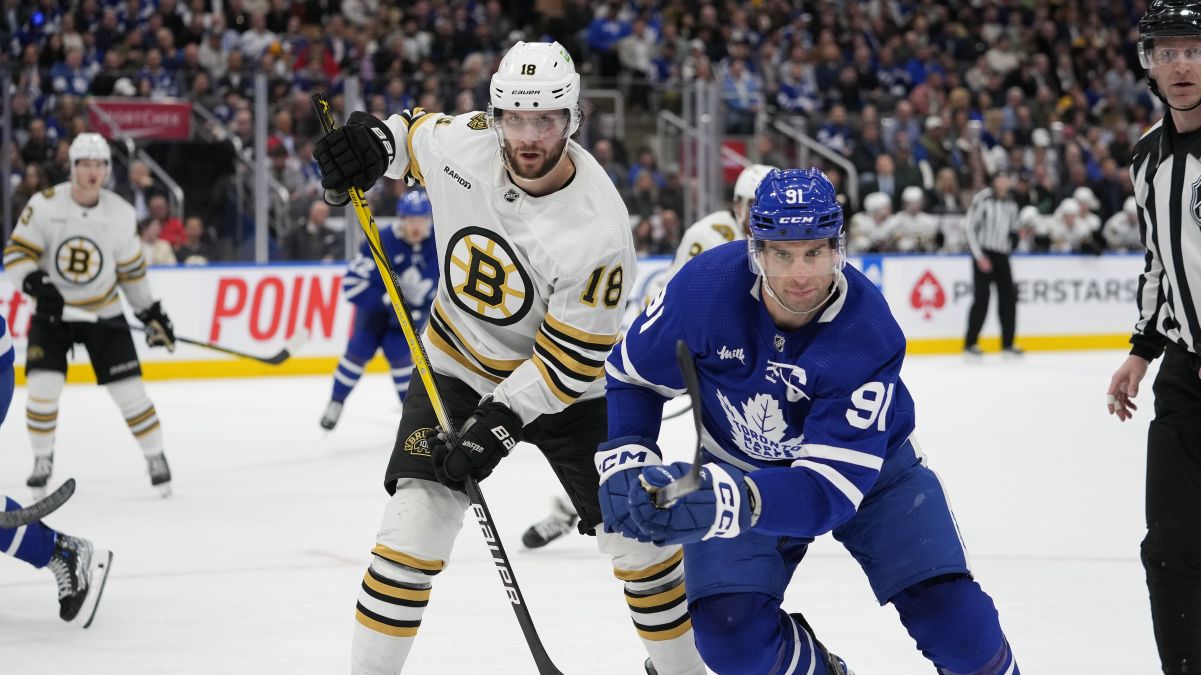Building Back the Bruins is a five-part series in which we'll examine the slow, difficult process of turning the team back into a perennial Stanley Cup contender. Today in Part 2, we look at Don Sweeney's role in turning things around, and improving on a rocky first year.
Just like the Bruins team that rebounded on the ice this year, Don Sweeney was much improved in his second season as general manager.
It was a bumpy ride for Sweeney in his first year, as he attempted to extricate the Bruins from a suffocating salary cap situation, reseed a prospect garden that had withered under the previous administration, and learn on the job while making some fairly substantial mistakes along the way.
BUILDING BACK THE BRUINS
- Part 1: Basking in the Fountain of Youth
- Part 2: The improvement of Don Sweeney
- Part 3: Strengthening their core was key to B's revival
- Part 4: Cassidy a key part of this season's improvement
- Part 5: When will B's emerge as a true Cup contender?
Mistakes like trading for cheap-shot artist Zac Rinaldo, or signing the mostly useless Jimmy Hayes to a three-year contract extension after acquiring him from the Panthers for Reilly Smith, or failing to move Loui Eriksson at the trade deadline a year ago before eventually losing him to free agency. Add in a fruitless two-year search for an established top-4 NHL defenseman and there are certainly things that Bruins management knows could have been done better in the last few years.
“When he sat down with us [at the beginning, Sweeney] kind of laid out what he thought was a vision of how to get our team back to where we want to be and in a sustainable period of time,” said Bruins president Cam Neely at the end-of-the-season press conference. "Having said that, he also said there would be some bumps along the way, especially early, and there has been. Would everybody like to look back and make different decisions? Yeah, we all would. Don’s no different.
Boston Bruins
“But the overall package for me, with Don, is I think he’s done a really good job of directing certain people in the organization to what we’re looking for. Where the team is right now and where it looks to be going, I think the future is bright.”
The future is bright largely because of the sweeping moves Sweeney made when he first took over hockey operations, trading Milan Lucic and Dougie Hamilton while stockpiling nine first- and second-round draft picks. Those picks have already delivered Brandon Carlo and Charlie McAvoy to the NHL level, with another wave of prospects -- Jake DeBrusk, Zach Senyshyn, Jakob Forsbacka Karlsson, Jakub Zboril -- expected over the next couple of seasons.
Still, the value of draft picks as assets hasn’t been perfect. Sweeney shipped away a boatload of secondary picks for rentals John-Michael Liles and Lee Stempniak two years ago. But through that experience, Sweeney learned and didn’t repeat the same mistake this season. At the deadline this year he gave up only a conditional late-round pick in exchange for rental winger Drew Stafford, who did the job nicely for the Bruins down the stretch as a hired gun on the wing.
And in the end, it was the strength of the Bruins core players and a replenishment of youth that pushed the team into the playoffs.
Sweeney made it clear he wasn’t satisfied with a first-round playoff exit and vowed to continue molding the B’s into a “deeper, more talented team.” Those are the words of a manager who sees the possibilities with his improving hockey club, and knows there's plenty to work with if he can pull the right strings.
“We want to become a deeper, more talented team from top to bottom," said Sweeney. "Taking one step forward, in my opinion, is not successful. It’s a good step, but we have work to do in a lot of areas that we want to continue to get better. The commitment to winning in this organization, it’s the first thing that our core players who have won and have lifted the Stanley Cup . . . it’s the first thing they ask. They make sure the commitment, top to bottom, is there.
"Our younger players need to continue to understand that and they need to grow. It’s great to have young players and you’re committing to it. But if they’re not good enough and they don’t deserve to be there, that’s not a good plan to have. I go back to what Adam Creighton, one of our pro scouts, said to everybody at the table at the trade deadline. He said, ‘We need to be a deeper, more talented team, and that’s the bottom line.’ That’s the onus. It’s on [me] right here, right in this chair.”
The biggest, most impactful move that Sweeney made this season, however, wasn’t with any of his draft picks, or with a trade, or a free-agent signing (even though Riley Nash and Dominic Moore provided very good value). Instead it was the difficult, if perhaps a bit too tardy, decision to sever ties with longtime head coach Claude Julien and promote Bruce Cassidy.
Cassidy was the right man in the right place at the right time, leading the Bruins to an 18-8-1 record down the stretch and qualifying for the playoffs. The Bruins played at a higher pace, scored more goals, allowed fewer goals, had consistently better special-teams groups and generally looked like an inspired hockey club that was having fun again. From a business standpoint, they were also more entertaining . . . and winning at a much higher clip on their home ice as well.
All of those things matter in a big way to a Bruins organization that is both a business and an important part of the Boston sporting community.
It was undoubtedly a tough call for Sweeney, given that the Bruins had won the Stanley Cup during the 10-year role of Julien, who earned more wins for the B’s than any head coach in franchise history. But it was the right call, and Sweeney deserves credit for it even if it was infamously, awkwardly announced on the day the New England Patriots held their Super Bowl parade in Boston.
“The decision was very much made here in Boston, the leadership here,” said owner Jeremy Jacobs. “My own impression is that it was overdue – maybe a little late. Maybe I precipitated part of that [with a] misplaced loyalty in that sense. But it was the right move. Coaches have a definite [shelf] life, it seems to be. [Julien] had been a long-serving coach. He spent a good bit of his career with us . . .
“But it was a very prudent move and it was very prudent there. Under those circumstances, I would say that Don did a terrific job in selecting [Cassidy] and motivating him and motivating the team.”
Making the coaching change could have been done the month prior after a shootout loss to the Detroit Red Wings or during the NHL All-Star break, as alluded to by the Bruins owner, but it was made with enough time to still push into the postseason. The B’s also managed to find their next head coach in the process as well, and that’s no small feat.
Now Cassidy is a major part of the effort to get faster, younger and more aggressive in the new NHL, while still holding onto some recognizable aspects of the traditional Bruins.
Sweeney and his group still need to pull off at least one substantial trade to help give this Bruins team what it needs (a left-shot top-4 D-man, a top-6 left winger scorer, or both) to truly get over the top. Now they’re also going to need patience in fighting the temptation to trade some of their prospect supply for what could become enticing short-term gains as they look for deeper pushes in the playoffs.
But there’s clearly more trust now in Sweeney, and by extension Neely, that the Bruins will do the right, and smart, thing both short term and long term. That’s a change from where the Bruins were just a year ago, and much of that can be chalked up to Sweeney growing into the considerable responsibilities running the day-to-day hockey ops over on Causeway Street.


